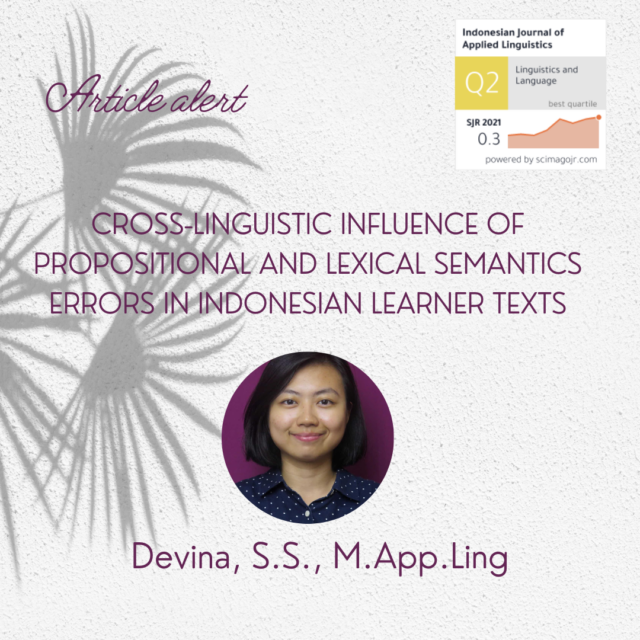Cross-Linguistic Influence of Propositional and Lexical Semantics Errors in Indonesian Learner Texts
Advanced language acquisition applies rigorous understanding of the target language (TL) which is oftentimes achieved by comparing mother tongue features to the TL. This is where cross-linguistic influence (CLI) occurs as learners transfer knowledge among languages. The study aims at investigating CLI in propositional and lexical semantics through questionnaires, weekly discussions, and assignment entries of 34 learner texts in Indonesian for the Business Communication course at a private university in West Jakarta.
Referring to Odlin’s (1989) CLI framework of semantics domain, the results show that CLI presents in 1) propositional semantics by 37.6% (i.e., semantic case by 4,3% and semantic universality and relativism by 33,3%) and 2) lexical semantics by 62,3% (i.e., cognate vocabulary by 8,6%; lexical universals and acquisition by 43% and lexicon and morphology by 10,7%). English (as the medium of instruction) influences the Indonesian production in word-choice, demonstrative determiner ini and itu; prefix-suffix conjugation (i.e., particle -lah, active-passive voice); and relative conjunction yang.
The findings suggest the patterns of error produced by learners whose mother tongue is Dutch and who use English as their second language. Moreover, in the Indonesian for Business Communication course, lecturers can refer to the findings of this research as a guide to support learners with their Indonesian language production.
The findings also demonstrate that learners who are familiar with informal-daily Indonesian take more time to develop adequate formal Indonesian, compared to those who do not use the language in their daily communication.
Read the full article here: https://ejournal.upi.edu/index.php/IJAL/article/view/36618
#sastrainggrisbinus
#articlealert



